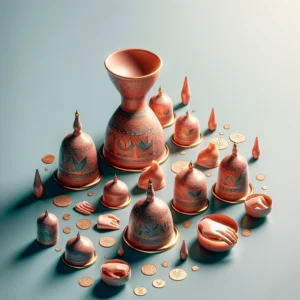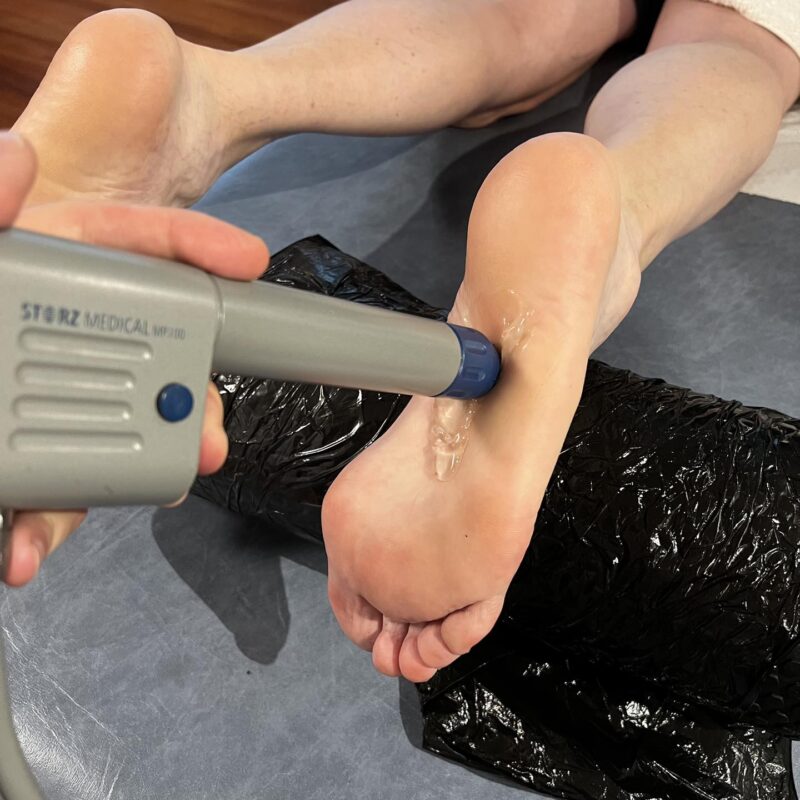Enhance Your Well-being with Wet Cupping Therapy: Understanding Hijama
Hijama, widely recognized as wet cupping therapy, is an ancient healing method that involves applying suction to the skin using specially designed cups, followed by a small incision to extract a small volume of blood. This therapeutic approach is believed to facilitate the elimination of toxins and encourage the body’s natural healing mechanisms. The cups can be crafted from diverse materials such as glass, bamboo, and silicone, strategically positioned on specific areas of the body to create a vacuum effect that enhances blood circulation.
The suction generated during this process is thought to invigorate blood flow and amplify the body’s inherent healing capabilities. Throughout a session, individuals often experience a sensation of tightness or pulling where the cups adhere to their skin. Many find the treatment to be remarkably soothing, often leading to a deep sense of relaxation and overall well-being.
Despite its unconventional nature, hijama has gained significant recognition for its potential therapeutic benefits, increasingly becoming a popular choice within holistic health practices. As you delve deeper into this time-honored therapy, you may uncover its unique contributions to health and self-care.
Essential Insights About Hijama Wet Cupping Therapy
- Hijama Wet Cupping Therapy stands as an ancient alternative medicine practice, utilizing suction on the skin to promote healing and improved blood flow.
- With historical roots in ancient Egyptian, Chinese, and Middle Eastern cultures, Hijama has served as a natural remedy for various ailments for centuries.
- The myriad benefits of Hijama Wet Cupping Therapy encompass pain relief, enhanced circulation, detoxification, and profound relaxation.
- The methodology of Hijama involves making small skin incisions and employing cups to extract blood and impurities from the body.
- Conditions like migraines, back pain, arthritis, and respiratory issues may find relief through Hijama Wet Cupping Therapy.
 Tracing the Historical Roots and Significance of Wet Cupping Therapy
Tracing the Historical Roots and Significance of Wet Cupping Therapy
The historical origins of hijama extend back thousands of years, with documented references found across cultures such as ancient Egyptian, Greek, and Chinese medicine. Notably, Hippocrates, the father of modern medicine, emphasized its efficacy for treating numerous health conditions. In Islamic culture, Hijama is esteemed, frequently referenced in Hadiths—sayings attributed to the Prophet Muhammad—which underscores its significance in these communities.
This cultural endorsement has solidified its enduring popularity, particularly in many Muslim populations. As you explore the rich history of Hijama, you will uncover its dual role in addressing physical ailments while also promoting spiritual and emotional healing. Ancient practitioners believed that by eliminating stagnant blood and toxins, they could restore both physical health and emotional balance.
Over the centuries, Hijama has evolved, integrating various techniques and philosophies from diverse cultures, leading to the modern practice we see today. Hijama is now embraced globally, with practitioners adapting traditional methodologies to meet contemporary health demands.
Unlocking the Therapeutic Benefits of Hijama Therapy
The therapeutic benefits of Hijama wet cupping therapy are extensive and diverse. Many individuals report considerable relief from persistent pain conditions, including migraines, back pain, and arthritis, following treatment. The suction created by the cups is believed to enhance circulation, thereby reducing inflammation and accelerating the recovery process from injuries.
Additionally, numerous individuals find that Hijama alleviates stress and anxiety, fostering an overall sense of well-being. Many also associate Hijama with detoxification, as the process is thought to effectively eliminate impurities from the blood. This cleansing effect can lead to heightened energy levels and an improved immune response.
As you weigh the potential benefits of this therapy, it is crucial to acknowledge that individual experiences can vary widely. While some may experience significant relief, others may not notice immediate changes. Nevertheless, many practitioners advocate for consistent sessions as part of a comprehensive approach to health and wellness.
 Step-by-Step Guide to the Wet Cupping Process
Step-by-Step Guide to the Wet Cupping Process
Upon arriving for your Hijama session, your practitioner will initiate a discussion about your health history and any specific concerns you may wish to address. This initial consultation is vital for customizing the treatment to meet your unique needs. Once you feel comfortable, the practitioner will identify specific areas on your body for treatment, often targeting points that correlate with your symptoms or areas of tension.
The therapy generally begins with dry cupping, where cups are placed on your skin to create suction without any incisions. After a brief period, the cups are removed, and small incisions are made on the skin using a sterile blade or lancet. The cups are then reapplied to extract a small amount of blood.
Though this aspect of the process may seem intimidating, many individuals report only minimal discomfort during the incisions. Each session typically lasts between 30 minutes to an hour, depending on your tailored treatment plan.
Exploring Conditions and Ailments Addressed by Hijama Therapy
Hijama wet cupping therapy is employed to alleviate a broad spectrum of conditions and ailments. Many practitioners advocate its effectiveness in treating musculoskeletal issues, such as back pain, neck pain, and joint discomfort. Athletes frequently turn to Hijama for muscle recovery and injury prevention, given its capacity to enhance circulation and mitigate inflammation.
Beyond physical ailments, Hijama is believed to provide relief for respiratory conditions, including asthma and bronchitis, by promoting optimal lung function and facilitating mucus clearance. Some individuals also seek this therapy for digestive issues and hormonal imbalances. As you explore the diverse applications of Hijama, it’s essential to engage with a qualified practitioner who can guide your treatment based on your specific health concerns.
 Understanding the Safety and Risks Associated with Hijama Wet Cupping
Understanding the Safety and Risks Associated with Hijama Wet Cupping
While Hijama wet cupping therapy is generally deemed safe when conducted by a trained practitioner, several risks and precautions warrant consideration. Temporary side effects, including bruising or mild discomfort at the cupping or incision sites, may occur. However, these effects typically resolve within a few days.
It is imperative to ensure that your practitioner adheres to stringent hygiene protocols to minimize the risk of infection. Certain individuals should approach Hijama with caution or avoid it entirely. If you have bleeding disorders, are pregnant, or suffer from specific skin conditions, discussing these factors with your practitioner before treatment is essential.
By remaining informed about potential risks and maintaining open communication with your provider, you can make a knowledgeable decision regarding the suitability of Hijama for your health journey.
The Rising Trend and Popularity of Hijama
In recent years, there has been a notable resurgence of interest in alternative therapies, particularly Hijama wet cupping therapy. As an increasing number of individuals seek holistic approaches to health and wellness, this ancient practice has found a renewed place in both Eastern and Western cultures. Social media platforms have significantly contributed to the awareness and dissemination of information regarding Hijama, with many users sharing their positive experiences and outcomes online.
The growing popularity of Hijama can also be linked to a rising acceptance of integrative medicine, which combines conventional treatments with alternative therapies for a more rounded approach to healthcare. As you navigate this trend, you may observe that more wellness centers and clinics are incorporating Hijama into their service offerings, making it more accessible than ever for those interested in exploring its benefits.
 How to Locate a Certified Practitioner for Wet Cupping Therapy
How to Locate a Certified Practitioner for Wet Cupping Therapy
Finding a qualified practitioner for Hijama wet cupping therapy is crucial for ensuring both safety and effectiveness during your treatment experience. Start your search by investigating local practitioners who specialize in this therapy; many holistic health centers or acupuncture clinics offer Hijama as part of their wellness services. It is vital to look for practitioners who possess formal training in cupping techniques and have a proven track record of treating diverse health conditions.
Before scheduling your session, consider reaching out for an initial consultation to discuss your health concerns and inquire about their treatment philosophy. A reputable practitioner will dedicate time to understand your needs and thoroughly explain the process. Additionally, perusing reviews or seeking recommendations from friends or family can aid you in finding a practitioner who aligns with your health and wellness objectives.
By taking these informed steps, you can embark on your journey into Hijama therapy with confidence in your chosen practitioner’s skills and expertise.
Frequently Asked Questions About Hijama Wet Cupping Therapy
What is hijama wet cupping therapy?
Hijama wet cupping therapy is an ancient form of alternative medicine where a therapist applies cups to the skin to create suction, believed to promote healing by increasing blood flow and reducing inflammation.
How does hijama wet cupping therapy work?
During hijama wet cupping therapy, the therapist creates small incisions on the skin and then places a cup over the incision to generate suction. This process draws out a small amount of blood, believed to help remove harmful substances from the body and promote healing.
What are the potential benefits of hijama wet cupping therapy?
Advocates of hijama wet cupping therapy claim it can assist with various conditions like pain relief, inflammation reduction, enhanced blood circulation, detoxification, and relaxation. However, scientific evidence supporting these claims is limited.
Is hijama wet cupping therapy safe?
When performed by a trained and qualified therapist, hijama wet cupping therapy is generally considered safe. Nonetheless, there is a risk of infection if proper hygiene and sterilization procedures are not followed, making it essential to seek treatment from a reputable and experienced practitioner.
Are there any potential side effects of hijama wet cupping therapy?
Some potential side effects of hijama wet cupping therapy may include temporary discomfort, bruising, and mild skin irritation at the cupping site. In rare cases, there may be a risk of infection or scarring.
Who should not undergo hijama wet cupping therapy?
Hijama wet cupping therapy is not recommended for individuals with certain medical conditions, such as hemophilia, leukemia, or those who are pregnant. Consulting with a healthcare professional before undergoing this therapy is crucial, especially for individuals with underlying health concerns.


























13 Comments
I’ve always found the idea of wet cupping therapy fascinating. There’s something intriguing about how this ancient practice still resonates with so many people today. It’s like a bridge between traditional healing and modern wellness trends. I remember the first time I heard about hijama; it was during a conversation with a friend who swore by it for alleviating chronic back pain. She described how invigorating the suction felt, almost like it released pent-up tension from her muscles.
I appreciate your detailed exploration of Hijama and its purported benefits for well-being. The therapeutic practices rooted in traditional medicine, like wet cupping therapy, often highlight the intersection of cultural heritage and health innovation. I recently had an opportunity to learn about the historical significance of cupping in various cultures, extending beyond just Islamic traditions to include ancient Egyptian and Chinese practices, which adds a fascinating layer to how these techniques have evolved.
It’s fascinating how practices like Hijama weave together cultural heritage and health. Your mention of its historical significance across various cultures really highlights the universal search for healing modalities throughout human history. I find it interesting that while there are distinct practices and beliefs associated with cupping in places like Egypt or China, many of these ancient healing methods share commonalities in their approaches—such as the emphasis on balance and energy flow.
You make a great point about the universal search for healing. It’s intriguing how these practices, rooted in different cultures, point to some common human experiences. Like you mentioned, the idea of balance and energy flow is central not only in cupping but also in other traditional healing arts. In many ways, it feels like a reflection of our innate desire to connect with ourselves and our environments.
“Explore more about the fascinating intersections of culture and healing in our latest article!”
https://mcrtherapies.co.uk/ig
It’s fascinating to read about hijama and its enduring presence in various wellness practices. As someone who has explored different healing modalities, I’ve often found that ancient techniques like wet cupping hold not only historical significance but also a unique approach to modern health challenges.
The exploration of Hijama, or wet cupping therapy, as an ancient healing practice in your post resonates deeply with me, especially in an age where holistic approaches are increasingly being integrated into modern healthcare paradigms. It’s fascinating to see how this traditional method, rooted in different cultures, has garnered attention not only for its potential therapeutic benefits but also for its ability to promote overall well-being.
Your exploration of Hijama and its implications for well-being prompts an interesting dialogue about how ancient practices like wet cupping continue to resonate in today’s wellness culture. While the therapeutic benefits you outline are compelling, I find it essential to approach such treatments with a nuanced understanding, especially given the surge of interest in alternative medicine amidst contemporary health challenges.
Your exploration of wet cupping therapy, or Hijama, brings to light a fascinating intersection of ancient practices and modern wellness trends. I’m intrigued by the therapeutic promise of wet cupping, particularly in light of my recent experience with complementary therapies aimed at enhancing well-being.
It’s interesting to see the resurgence of ancient practices like Hijama in today’s wellness culture, considering how many people are seeking alternatives to conventional medicine. While the idea of wet cupping for detoxification is compelling, I do find myself pondering the scientific validation behind some of these claims.
It’s fascinating to explore how hijama, or wet cupping therapy, ties into the broader tapestry of holistic healing practices. I’ve always been intrigued by ancient methods that prioritize the body’s natural ability to heal. It’s interesting to see how techniques like hijama resonate with modern wellness trends focused on detoxification and self-care.
I appreciate your insights on Hijama and its benefits! I’ve recently been exploring various traditional healing practices, and wet cupping therapy really piques my interest. The idea of using suction and a small incision to aid the body’s detoxification process feels like such an intriguing blend of art and science.
It’s fascinating to read about Hijama, or wet cupping therapy, and its enduring prominence within various cultures as a method of healing. Your explanation of the procedure offers a clear glimpse into both its mechanics and its purported benefits. However, it also opens the door to a more nuanced conversation about the intersection of traditional practices and modern medicine.
The exploration of wet cupping therapy, or Hijama, in your post resonates deeply with me, especially in today’s fast-paced world where many of us seem to be continuously searching for genuine ways to enhance our well-being. The methods we choose for self-care can often reflect our beliefs about health, healing, and what it means to nurture our bodies and minds.